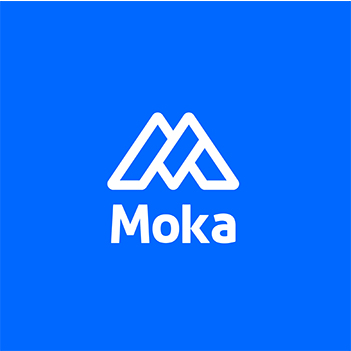How to Effectively Measure the ROI of HR Software

How to Measure the ROI of Your HR Software effectively? Start by understanding its impact on your business. ROI helps you evaluate whether your investment delivers measurable value. For example, companies using AI-driven HR tools report a 25% boost in employee satisfaction and a 15% drop in turnover rates. Tools like these streamline processes, reduce costs, and improve decision-making. Yet, only 32% of organizations know how to measure the ROI of their HR software effectively. By focusing on clear metrics and tangible outcomes, you can ensure your HR software aligns with your goals and maximizes value.
Key Takeaways
Set clear goals for your HR software. Decide what you want, like lowering turnover or boosting employee happiness.
Track both visible and hidden benefits. Check money saved and work improvements along with employee happiness and engagement levels.
Check how your HR software is doing often. Use tools to watch important numbers and make sure it fits your changing needs.
Know all the costs involved. Include both direct and hidden costs to understand the full price of your investment.
Match your HR software with business goals. Make sure it helps bigger plans to improve work and profits.
How to Measure the ROI of Your HR Software
Defining ROI in the context of HR software
Return on Investment (ROI) measures the value you gain from an investment compared to its cost. In the context of HR software, ROI evaluates how effectively the software improves your HR processes and contributes to business goals. It’s not just about financial returns. ROI also includes time savings, better employee engagement, and improved decision-making. For example, companies using HR automation save up to 40% on administrative costs. This allows HR teams to focus on strategic initiatives like workforce planning and employee development.
To define ROI for HR software, you need to consider both tangible and intangible benefits. Tangible benefits include cost savings and productivity improvements. Intangible benefits, such as enhanced employee satisfaction and reduced turnover, are equally important. For instance, IBM reported an 85% increase in employee engagement after reducing administrative tasks by 30%. These metrics highlight how HR software can transform your organization.
Why ROI is critical for HR and business success
Measuring ROI ensures that your HR software delivers measurable value. It helps you justify the investment to stakeholders and align the software’s performance with your business objectives. High-performing organizations often use ROI data to make informed decisions. For example, SAP achieved a 25% improvement in employee goal alignment by leveraging real-time feedback tools. This demonstrates how ROI directly impacts business outcomes.
A strong ROI also addresses critical challenges like employee turnover. High turnover costs businesses an average of 33% of an employee’s annual salary. By investing in effective HR software, you can reduce these costs and improve retention. Additionally, better data management and forecasting capabilities help you identify skill gaps and plan for the future. These benefits make ROI a vital metric for HR and overall business success.
Steps to Calculate ROI
Setting clear objectives for the software
To effectively measure the ROI of HR software, you must start by setting clear objectives. Define what you want the software to achieve for your organization. For example, are you looking to automate repetitive tasks, improve employee engagement, or reduce turnover? Identifying these goals helps you focus on measurable outcomes.
Consider creating a roadmap that outlines specific processes you want to enhance. For instance, if your goal is to streamline onboarding, track how much time the software saves compared to manual methods. Establishing benchmarks ensures you can measure progress and determine success. Clear objectives also align stakeholders, ensuring everyone agrees on what the software should accomplish.
Tip: Break down your goals into actionable steps. For example, if you aim to improve employee satisfaction, use surveys to measure changes before and after implementation.
Identifying all associated costs
Understanding the total cost of ownership is crucial for calculating ROI. Start by listing all direct costs, such as software purchase and setup fees. Then, account for indirect costs like ongoing maintenance, vendor support, and potential hidden expenses. Don’t forget to include costs related to change management, such as training employees and managing the transition.
Cost Type | Description |
|---|---|
Direct Costs | Upfront expenses related to software purchase and initial setup. |
Indirect Costs | Ongoing costs such as maintenance, support, and potential hidden costs. |
Change Management | Costs associated with training and transitioning to the new system. |
Data Migration | Expenses for transferring existing data to the new system. |
Business Disruption | Costs incurred due to operational disruptions during implementation. |
By conducting a comprehensive cost analysis, you can avoid surprises and ensure a smoother implementation process. This step also helps you evaluate whether the software’s benefits outweigh its expenses.
Measuring tangible and intangible benefits
To calculate ROI, you need to measure both tangible and intangible benefits. Tangible benefits include cost savings, reduced labor hours, and increased productivity. For example, automating payroll can save hundreds of hours annually, which translates into significant monetary value. Compare pre- and post-implementation data to quantify these gains.
Intangible benefits, while harder to measure, are equally important. Improved employee satisfaction, better company culture, and higher retention rates contribute to long-term success. Use surveys and feedback tools to assess these changes. For instance, self-service portals often enhance employee satisfaction by giving them more control over their HR needs.
Note: While intangible benefits may not have direct monetary value, they play a critical role in achieving organizational goals.
By combining these steps—setting objectives, identifying costs, and measuring benefits—you can effectively calculate the ROI of your HR software and ensure it aligns with your business needs.
Using ROI formulas and methodologies
To measure the ROI of your HR software effectively, you need to apply proven formulas and methodologies. These tools help you quantify the financial and operational impact of your investment. By using structured approaches, you can ensure accurate calculations and make informed decisions.
ROI Formula Basics
The standard ROI formula is straightforward:
ROI (%) = [(Benefits - Costs) / Costs] x 100
This formula calculates the percentage return on your investment. Start by identifying the total benefits, including cost savings and productivity gains. Subtract the total costs, such as software fees and training expenses. Divide the result by the costs, then multiply by 100 to get the ROI percentage.
For example, if your HR software saves $50,000 annually and costs $20,000, the ROI would be:
ROI (%) = [($50,000 - $20,000) / $20,000] x 100 = 150%
This means the software delivers a 150% return on your investment.
Advanced Methodologies for ROI Measurement
To gain deeper insights, you can use methodologies like the Kirkpatrick Model. This model evaluates the impact of HR initiatives, including software implementation, across five components:
Component | Description |
|---|---|
Reaction | Measures participants' immediate responses to the training. |
Learning | Assesses the knowledge and skills gained by participants. |
Behavior Change | Evaluates the application of learned skills in the workplace. |
Final Results | Analyzes the overall impact of training on organizational performance. |
ROI Calculation | Compares business impact outcomes to total training costs to determine monetary benefits. |
By applying this model, you can assess how your HR software influences employee behavior, organizational performance, and financial outcomes.
Practical Tips for ROI Calculation
Use Pre-Implementation Data: Compare metrics like employee turnover and administrative costs before and after software implementation. This helps you identify measurable improvements.
Track Long-Term Benefits: Include intangible benefits like improved employee satisfaction and retention. These factors contribute to sustained organizational success.
Leverage Automation Tools: Many HR software platforms offer built-in analytics to simplify ROI calculations. Use these tools to save time and ensure accuracy.
By combining formulas and methodologies, you can measure the ROI of your HR software with precision. This approach ensures your investment aligns with business goals and delivers maximum value.
Key Metrics for Measuring ROI

Financial metrics (e.g., cost savings, payback period)
Financial metrics provide a clear picture of how your HR software impacts your bottom line. These metrics focus on measurable outcomes like cost savings, payback periods, and productivity gains. For example, cost savings can come from automating repetitive tasks, reducing manual errors, or streamlining payroll processes. If your software reduces administrative costs by $30,000 annually, that’s a direct financial benefit you can track.
The payback period is another critical metric. It measures how long it takes for your investment to generate enough savings or revenue to cover its costs. For instance, if your HR software costs $20,000 and saves $10,000 annually, the payback period would be two years. This metric helps you determine how quickly your investment delivers value.
A study of SaaS companies shows that a good R&D payback ratio ranges from $2 to $4 for every dollar spent. This insight highlights the importance of evaluating whether your HR software generates sufficient returns compared to its costs. By focusing on these financial metrics, you can assess the software’s effectiveness in driving cost efficiency and profitability.
Non-financial metrics (e.g., employee engagement, retention)
Non-financial metrics measure the broader impact of HR software on your workforce and organizational culture. These metrics include employee engagement, retention rates, and satisfaction scores. For example, employee engagement scores reflect how committed and satisfied your employees feel. Higher engagement often leads to better performance and lower turnover.
Retention rates are another vital metric. They show the percentage of employees who stay with your company over a specific period. Companies like Zoom have reduced their time-to-fill vacancies by 50%, which has improved employee morale and retention. Similarly, SAP used HR software to lower turnover rates by 15%, demonstrating how these tools can enhance workforce stability.
Employee satisfaction surveys and net promoter scores (eNPS) also provide valuable insights. These tools measure how employees perceive their work environment and whether they would recommend your company as a great place to work. For instance, Walmart reported a 30% increase in employee satisfaction during onboarding after implementing new HR software. By tracking these non-financial metrics, you can understand how your software contributes to a positive and productive workplace.
Overcoming Challenges in ROI Measurement
Quantifying intangible benefits
Measuring intangible benefits can feel challenging, but it is essential for understanding the full impact of your HR software. These benefits include improved employee morale, stronger company culture, and better collaboration. While they may not have direct monetary value, they significantly influence your organization’s success.
To quantify these benefits, you can use several methods:
Conduct questionnaires or interviews during the planning phase to identify potential intangible outcomes.
Use focus groups to gather feedback on how the software improves processes or employee experiences.
Analyze the connection between intangible benefits and the software by using scales or metrics to gauge their influence.
For example, if employees report higher satisfaction after using self-service HR tools, you can link this improvement to reduced turnover rates. By collecting and analyzing this data, you can demonstrate how intangible benefits contribute to your ROI.
Addressing incomplete or inaccurate data
Incomplete or inaccurate data often creates obstacles when calculating ROI. Without reliable information, you may struggle to measure the true impact of your HR software. Common issues include data silos, system limitations, and reliance on qualitative insights like employee feedback.
To overcome these challenges:
Collaborate with other departments to gather comprehensive data. For instance, work with IT to ensure seamless data integration across systems.
Use analytics tools within your HR software to track key metrics and reduce reliance on subjective feedback.
Regularly audit your data to identify gaps or inaccuracies that could skew your calculations.
Accurate data ensures your ROI calculations reflect the real value of your investment. It also strengthens the credibility of your HR team’s contributions to business success.
Aligning ROI measurement with business goals
Aligning ROI measurement with your organization’s goals ensures your HR software supports broader business objectives. This alignment helps you demonstrate how the software contributes to productivity, profitability, and employee satisfaction.
Consider these examples:
Organization | HR Strategy Description | Business Outcome |
|---|---|---|
Fostering a culture of innovation through flexible work environments and diversity. | Increased productivity and profitability, contributing to its status as a valuable company. | |
Southwest Airlines | Hiring for attitude and cultural fit to enhance customer service and corporate culture. | Strong financial performance and reputation for exceptional customer service. |
IBM | Investing in employee development and talent management to create competitive advantage. | Improved productivity, employee retention, and overall business growth. |
IKEA | Prioritizing employee development and engagement as part of business strategy. | Increased customer satisfaction and brand loyalty, boosting employee morale and retention. |
By aligning your ROI measurement with these types of strategies, you can show how HR software drives meaningful outcomes. This approach ensures your investment supports both short-term goals and long-term growth.
Best Practices to Maximize ROI

Continuously evaluating software performance
Regularly assessing your HR software ensures it continues to meet your organization’s needs and delivers measurable value. Companies that track HR metrics see a 47% higher ROI, according to SHRM. Continuous evaluation allows you to identify areas for improvement, optimize processes, and adapt to changing business requirements.
To maximize ROI, focus on these key practices:
Monitor key performance indicators (KPIs) such as employee engagement, retention rates, and cost savings.
Use built-in analytics tools to track software performance and generate actionable insights.
Conduct regular feedback sessions with employees to understand their experiences with the software.
Research from Deloitte shows that organizations measuring HR performance are three times more likely to outperform competitors. By adopting a data-driven approach, you can enhance decision-making and improve financial outcomes.
Source | Statistic | Implication |
|---|---|---|
SHRM | Highlights the financial benefits of continuous evaluation | |
Deloitte | 3x more likely to outperform competitors | Demonstrates the competitive advantage of measuring HR performance |
Aberdeen Group | 34% higher revenue per employee | Shows the value of data-driven HR processes in boosting productivity |
Leveraging integrations and automation
Integrating your HR software with other business tools and automating repetitive tasks can significantly enhance ROI. For example, automation improves productivity by 47% and reporting accuracy by 73%, according to Lighthouse Research & Advisory. These improvements free up time for HR teams to focus on strategic initiatives.
Here’s how you can leverage integrations and automation effectively:
Connect your HR software with payroll, performance management, and recruitment systems to streamline workflows.
Automate routine tasks like employee onboarding, benefits administration, and attendance tracking.
Use AI-powered tools to analyze data and provide predictive insights for better decision-making.
Companies that implement HR technology report twice the level of employee engagement. This demonstrates how automation not only saves time but also enhances the employee experience.
Evidence Type | Statistic/Outcome | Source |
|---|---|---|
Productivity Increase | 47% | Lighthouse Research & Advisory report |
Improvement in Reporting | 73% | Lighthouse Research & Advisory report |
Enhanced Employee Engagement | 2x | Companies with recent HR technology implementations |
Aligning software use with organizational objectives
Aligning your HR software with your company’s goals ensures it supports broader business priorities. This alignment helps you demonstrate how the software contributes to measurable outcomes like profitability, productivity, and employee satisfaction.
To achieve this alignment:
Define clear KPIs that reflect your organizational objectives, such as reducing turnover or improving time-to-hire.
Use financial impact analysis to prioritize HR initiatives and allocate budgets effectively.
Regularly assess both tangible and intangible benefits to ensure the software delivers value across all areas.
For example, organizations that align HR KPIs with business goals are 79% more likely to achieve strategic success, according to PwC. By focusing on measurable outcomes like reduced error rates and faster processing times, you can showcase the software’s impact on your bottom line.
Evidence Description | Key Points |
|---|---|
Importance of KPIs | Establishing KPIs helps define objectives and measure success in HR initiatives. |
Financial Impact Analysis | Analyzing financial impacts aids in prioritizing HR initiatives and budget allocation. |
Comprehensive ROI Evaluation | Assessing both tangible and intangible gains is essential for a complete ROI assessment. |
Quantifiable Advances | Focus on measurable outcomes like reduced processing times and error rates to demonstrate benefits. |
By following these best practices, you can maximize the ROI of your HR software and ensure it remains a valuable asset for your organization.
Measuring the ROI of HR software requires a clear focus on objectives, costs, and benefits. You should track both financial metrics, like cost savings and payback periods, and non-financial metrics, such as employee engagement and retention. A data-driven approach ensures you make informed decisions and maximize the value of your investment.
Businesses using HR analytics report significant improvements:
Evidence Type | Statistic/Outcome |
|---|---|
Employee Engagement | |
Turnover Rates | 22% decrease in turnover rates |
Hiring Efficiency | 50% reduction in hiring time with ATS |
Training ROI | 353% return on every dollar spent on training |
Productivity Improvement | 20% increase in productivity with performance systems |

Regularly evaluating your HR software ensures it adapts to your evolving needs. By leveraging analytics and aligning software use with business goals, you can achieve sustainable growth and long-term success.
FAQ
What is the best way to start measuring ROI for HR software?
Begin by defining clear goals for the software. Identify what you want to achieve, such as reducing costs or improving employee engagement. Then, track metrics like time savings, cost reductions, and employee feedback to measure progress.
How do you calculate the payback period for HR software?
Divide the total cost of the software by the annual savings it generates. For example, if the software costs $10,000 and saves $5,000 yearly, the payback period is two years. This metric shows how quickly your investment pays off.
Can intangible benefits like employee satisfaction be measured?
Yes, you can measure intangible benefits using surveys, feedback tools, and engagement scores. For example, track changes in employee satisfaction before and after implementing the software. These insights help you understand its broader impact.
How often should you evaluate the ROI of HR software?
Evaluate ROI regularly, at least once a year. Frequent assessments ensure the software continues to meet your needs and deliver value. Use analytics tools to track performance and identify areas for improvement.
What if the ROI of HR software seems low?
Low ROI might indicate misaligned goals or underutilized features. Reassess your objectives and ensure the software aligns with your business needs. Provide additional training to employees to maximize its potential.
See Also
Finding The Top HR Software Available Online Today
Boost Your Recruiting With MokaHR's Compliance Software Integration
Maximizing Business Productivity Using MokaHR's HR Solutions
Enhance Your Hiring Strategy With MokaHR's CRM Tools
Improving Operational Efficiency Through MokaHR's HR Management System
From recruiting candidates to onboarding new team members, MokaHR gives your company everything you need to be great at hiring.
Subscribe for more information

